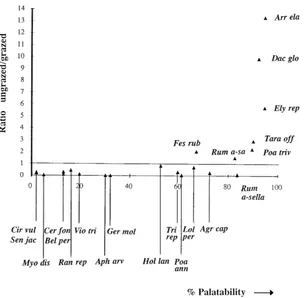Directory UMM :Data Elmu:jurnal:A:Agriculture, Ecosystems and Environment:Vol78.Issue3.May2000:
Teks penuh
Gambar




Dokumen terkait
In this paper, the effects of changes in a large number of spatially referenced land-use variables are considered in relation to the probability of loss of selected farmland
Fresh manures and stored (dry) manures were not significantly different in nutrient concentrations although stored manures had slightly higher nutrient concentrations, probably as
Since many species in this genus produce volatile fatty acids and indole and more than half of the species have not been identified, the effect of this bacterial group in general,
The aim of the fumigation experiments carried out in 1995 and 1996 was to characterize the effects of ozone (constant concentrations vs ozone peaks under equal dose conditions) on
(B) Linear relationship between percent of root length colonized by mycorrhizal fungi and percent of water stable soil aggregates at 54 days after emergence of maize plants in
In the semi-arid part of northern Tanzania, the native tropical woodland is undergoing a rapid conversion into agricultural land. This has resulted in drastic ecological changes in
The persistence of herbicides applied in vineyards has become a concern in recent years due to their wide use. Investigations into the fate of herbicides in a vineyard in the
suming that findings of the field study applicable to the entire district, farm trees and crop residues con- stitute the two most important sources of fodder, each accounting for


